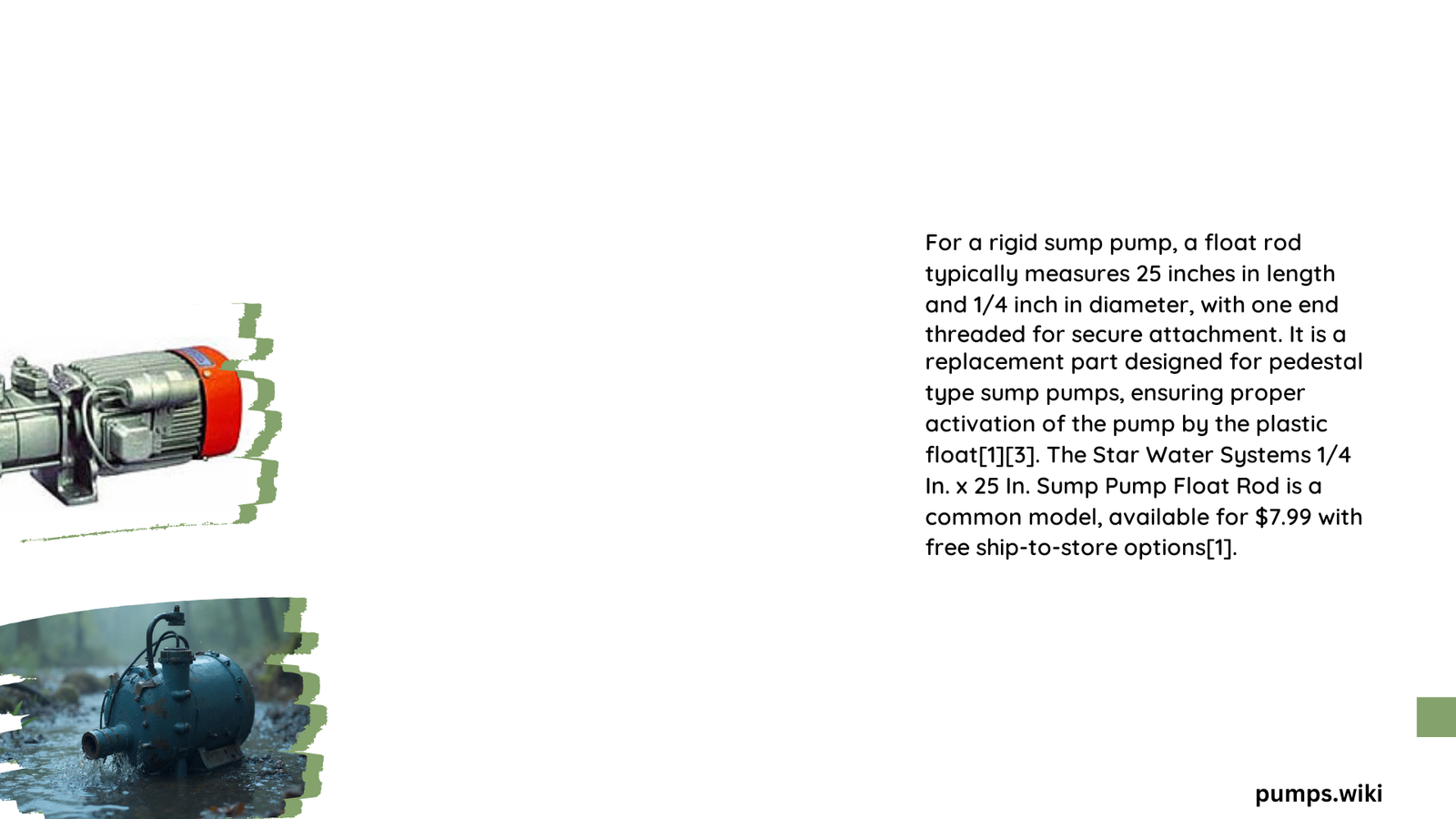Float rods in rigid sump pumps are critical mechanical components that control water level activation, typically constructed from corrosion-resistant stainless steel. These precision-engineered devices ensure reliable pump operation by triggering automatic water removal when liquid reaches predetermined levels, preventing potential basement flooding and water damage through precise mechanical switching mechanisms.
What Makes Float Rod Essential for Rigid Sump Pump?
Float rods serve as the primary sensing mechanism in sump pump systems, translating water level changes into mechanical activation signals. Their fundamental purpose involves:
- Detecting water accumulation
- Triggering pump activation
- Preventing potential basement flooding
- Ensuring automated water management
What Materials Compose Float Rods?
| Material | Characteristics | Durability Rating |
|---|---|---|
| Stainless Steel | Corrosion-resistant | High |
| Brass | Moderate corrosion protection | Medium |
| Reinforced Plastic | Lightweight | Low-Medium |
Key Material Selection Criteria
Selecting appropriate float rod materials requires considering:
- Corrosion Resistance: Essential for prolonged underwater exposure
- Mechanical Strength: Ability to withstand repeated movements
- Weight Considerations: Impacts float sensitivity
- Chemical Compatibility: Resistance to potential contaminants
How Do Float Rods Function?
Float rods operate through a straightforward mechanical principle:
- Water level rises in sump pit
- Float moves upward along rod
- Mechanical switch activates
- Pump begins water extraction
- Water level decreases
- Float descends
- Pump deactivates automatically
What Are Common Float Rod Installation Challenges?
Professionals encounter several potential installation complexities:
- Alignment Precision: Ensuring perfect vertical positioning
- Length Calibration: Matching rod length to pit depth
- Switch Sensitivity: Preventing false triggers
- Obstruction Management: Avoiding mechanical interference
How to Troubleshoot Float Rod Issues?
Diagnostic steps include:
- Visual inspection for physical damage
- Check rod movement smoothness
- Test switch activation points
- Verify electrical connections
- Assess mechanical wear
Expert Maintenance Recommendations
- Quarterly Inspection: Check rod alignment
- Annual Lubrication: Apply marine-grade lubricant
- Replace Every 3-5 Years: Prevent potential failure
Technical Specifications
- Standard Length: 12-24 inches
- Typical Material: 304 Stainless Steel
- Weight Range: 0.5-1.2 pounds
- Operating Temperature: 32-180°F
Cost Considerations
| Quality Level | Price Range | Expected Lifespan |
|---|---|---|
| Basic | $15-$30 | 1-2 years |
| Professional | $40-$80 | 3-5 years |
| Premium | $90-$150 | 5-7 years |
Conclusion

Float rods represent sophisticated yet simple mechanical solutions critical for automated water management in rigid sump pump systems. Understanding their functionality, materials, and maintenance requirements ensures optimal performance and long-term reliability.
